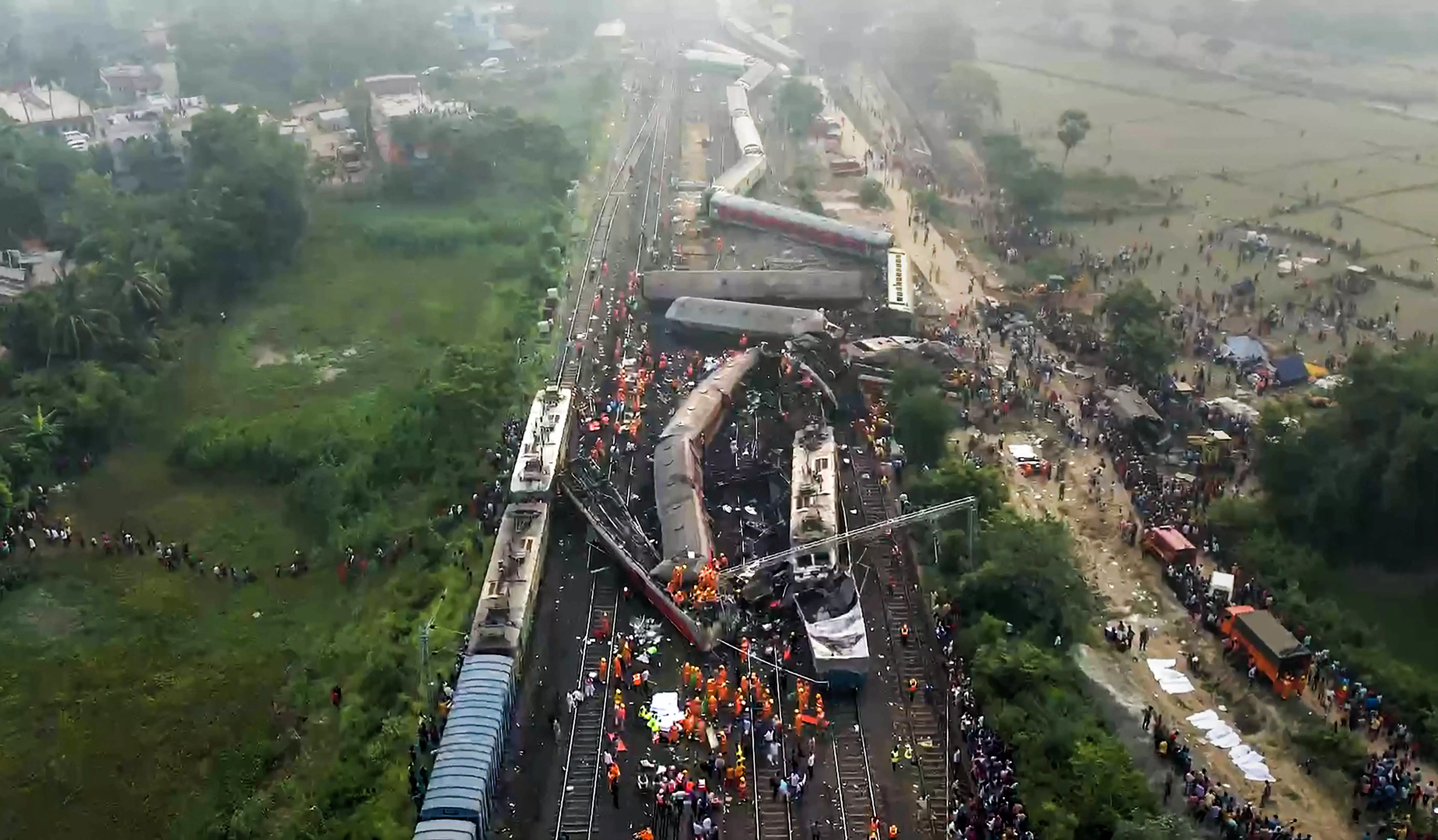Safety derailed
The Railways are India’s lifeline; but how safe are they? The recent three-train tragedy raises questions

One of the first stories that I had written as a newbie magazine writer was about a train crash. The year was 2010 and Uttar Banga Express had collided into Vananchal Express as it was leaving the platform. The fatal accident left 66 people dead in its trail. This thought first crossed my mind then that human life, in a populous country like India, comes cheap. The recent three-train collision that has killed 288 people is testimony to the continuing unsafety of train travel.
In recent decades, about a dozen train accidents proved to be deadly. Along with the Sainthia train crash of 2010 that I just mentioned, others joining the infamous list in recent years are: Jnaneswari Express (2010, 148 people killed), Chhapra-Mathura Express (2011, 69 people dead), Hubli-Bangalore Hampi Express (2012, 25 people killed), Tamil Nadu Express (2012, 30 perished), Gorakhdham Express (2014, 25 killed), Janata Express (2015, 30 dead), Patna-Indore Express (2016, 150 killed), Kalinga-Utkal Express (2017, 21 killed), Bikaner-Guwahati Express (2022, 9 killed). These, however, have not been the only ones. Over 50 smaller accidents have hit the railways in the last nine years, not to mention the scores of near-mishaps that go virtually unreported every year.
The Indian Railways are the lifeline of the country, traversing 64,000 kilometres, connecting the length and breadth of our vast and diverse nation. With over 12 million people travelling on 14,000 trains every day — the railways have been our pride and joy. Even though the Railways play a pivotal role in India connectivity, it’s a damn shame that foolproof standards of safety have been impossible to instill into its systems and workings.
Over the years, rail authorities have purportedly been focussing on increasing safety. Railway tracks have been upgraded and there has been installation of a fail-safe device called ‘kavach’ to prevent trains from head on collision. The Railways have also scrapped all unmanned level crossings. However, the Odisha train tragedy raises glaring loopholes in the plans to implement complete safety of train passengers. The much-hyped ‘kavach’, which literally means shield, while announced last year, was not available on the Coromandel train route.
The Ministry of Railways has assured from time to time that no crew member is overdue for PME (periodic medical examination) and have been receiving timely “safety training, Refresher course and any other mandatory courses”. Apparently, the Railways also undertakes regular “preventive and predictive maintenance” of the Railway assets. If this is indeed more than just glib writing, then how is it that several warnings from varied sources have gone unheard? Foremost among these is a damning 2022 report by the Comptroller and Auditor General of India (CAG) titled ‘Derailment in Indian Railways’. The now much-discussed report alerted the government on several operational issues that threatened the safety of the Railways — lack of proper inspection, underutilisation of funds, reduced track renewals, non-completion of 49 per cent of all derailment reports within stipulated timelines, 3.12 lakh vacancies, yet to be operational Track Management System (TMS) which would allow online monitoring of tracking maintenance, among many other red flags. The report also revealed that human error was the leading cause of a majority of rail calamities in the last three decades.
As India keeps pace with the world, there is a place for high-speed Vande Bharat Express and bullet trains. But development and progress should not come at the cost of neglecting and upgrading existing rail infrastructure. Merging the Railway Budget with the Union Budget since 2017 has also robbed the scope for important questions on management of the railways. Unimpeachable levels of professionalism and efficiency are needed to prevent man-led train disasters. There was a time when incidents of grave public neglect or national disaster or acts of terrorism, all leading to the loss of numerous lives, necessitated a ministerial resignation. Now, the times have changed. No one wants to be the sacrificial lamb but it also doesn’t mean that they can’t be held accountable. The buck stops where?
The writer is an author and media entrepreneur. Views expressed are personal



